I invite you all to go CDs nuts, as it's the return of the Mega Archive CD! 1992 saw an additional twenty-seven Sega/Mega-CD games, so I'm splitting them up into three groups of nine. (Multiplication tables, you haven't failed me yet.) After this batch we'll be all caught up with the Mega Archive, currently languishing in the November of 1992.
I won't repeat the entire spiel about the Sega CD's backstory: in short, it was a CD peripheral built during a time when all the major console developers were eyeing the optical media format and what it might mean for the future of game development, with Sega intending to get theirs out into the marketplace before SNES and Sony could finish up their prototype (though they needn't have rushed, in retrospect). I should, however, make the important historical note here that the Sega CD debuted in North America towards the end of the below timeframe. Not only did this immediately raise the peripheral's profile - Sega was a much bigger deal outside of Japan, at least in comparative sales figures - but it would also invite a great deal of international third-party support. We're seeing the calm before the storm with this entry, stopping just shy of the Sega CD's November launch date*.
* Little footnote here: Many internet sources say the Sega CD officially launched in North America on October 15th, while others suggest it was around November 9th so as to give developers enough time to assemble a decent library of launch titles to sell alongside it. From what I've been able to gather, both are correct: the October date was when the system was first shown off - "launched" in the press gala preview sense, giving the media their first look at the Sega CD in action - while the November date is when the system began appearing in retail stores.
- Here's the previous Mega Archive CD: Part I.
- And here's the most recent Mega Archive: Part XXIII.
Part II: CD12-CD20 (July '92 - October '92)
CD12: Sing!! Sega Game Music Presented by B.B. Queens
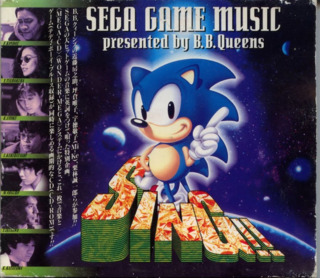
- Developer: Sega
- Publisher: BMG Victor
- JP Release: 1992-07-26
- NA Release: N/A
- EU Release: N/A
- Franchise: N/A
- Genre: Miscellaneous
- Theme: Charging Thirty Bucks for a Music CD
- Premise: Sega must've decided that maybe not everyone knew you could use your shiny new Mega CD as a stereo also, so they created (or commissioned, or were asked to be involved with) this CD of pop jams based on Sega BGM.
- Availability: Can't see why they'd rerelease this, given they'd have to pay the artists again and no-one buys CDs any more. Might be a fun little addition to a hypothetical "Sega CD Mini" though.
- Preservation: Welcome to the newest edition of "Should We Even Have a Wiki Page For This?" and the answer is "Yes! Probably!" - though this was promoted as a music CD first and foremost by BGM Victor, a recording label owned by Sony at the time, its first track is a data track. That is, there's Sega CD game data encoded on the disc, in this case a port of the 1985 Sega arcade game Teddy Boy Blues only now with CD audio and the option to use any of the songs on the disc as the BGM. (We've covered Teddy Boy Blues before (MA XIV), as it was part of the Game Toshokan range of downloadable games for the online Sega MegaNet service.) The songs on the disc are performed by J-Pop band B.B. Queens, who added lyrics and instrumentals to Mega Drive and Mega-CD music: it's all in English and is glorious, especially "Burnin' Love" (based on the After Burner theme, which I never pegged as romantic ballad material). Despite sporting Sonic on the cover, any Sonic connections are tenuous at best: there's one track on here ("Funky Brothers") that was originally meant for the unreleased arcade game SegaSonic Bros., which looked to be a Super Puzzle Fighter style game. (Someone uploaded the whole CD on YouTube, so have at it before Sega or Sony notice.)
CD13: Detonator Orgun

- Developer: HOT-B
- Publisher: HOT-B
- JP Release: 1992-07-31
- NA Release: N/A
- EU Release: N/A
- Franchise: Detonator Orgun
- Genre: Adventure
- Theme: That's Seriously The Name We're Going With For Our Mecha Anime?
- Premise: College student Tomoru Shindo finds himself telepathically connected to a mechanical alien lifeform named Orgun, who warns him that the Earth will soon be destroyed by others of his race. If this all happened in 2020, I'd tell them to go right ahead.
- Availability: I don't see a rerelease of this game ever happening for various licensing reasons, but like all forgotten anime mecha Orgun did eventually show up in the Super Robot Wars series. They've got this whole "Island of Misfit Mecha" going on over there.
- Preservation: I had my mind blown by this game's developer screen - HOT-B is an acronym? For the enigmatic phrase "He is Over There, Because"? Or was that just some Detonator Orgun in-joke they sneaked in? Either way, HOT-B was given the reins to a CD-enhanced game adaptation of the mecha anime OVA series of the same name, and they chose to turn it into an adventure game. Of the usual menu-driven sort ("go here," "talk to that person") that were popular in Japan at the time. Naturally, I couldn't get too far into the text-heavy interface once the game started, but it had a typically dramatic anime intro with spoken dialogue and everything - an almost shot-for-shot recreation of the OVA's opening scenes. This would be HOT-B's only foray on the Sega CD, or indeed any CD-based platform seeing as they went bankrupt the following year. At least they went out with a bang from their detonating organ.
CD14: Prince of Persia
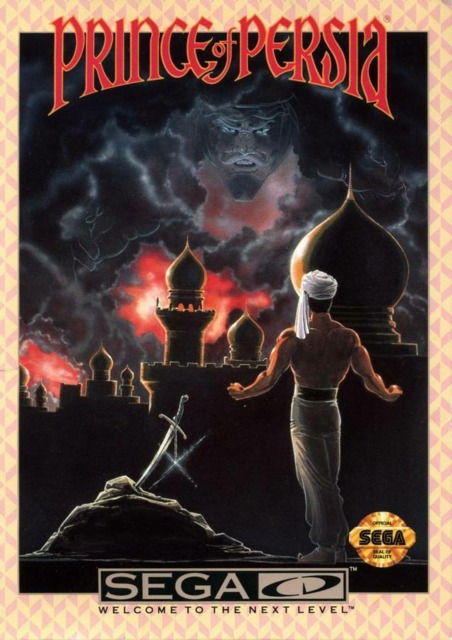
- Developer: Bits Laboratory
- Publisher: Victor Musical Industries (JP) / Sega (NA/EU)
- JP Release: 1992-08-07
- NA Release: December 1992
- EU Release: 1993
- Franchise: Prince of Persia
- Genre: Platformer
- Theme: Aladdin Parkour
- Premise: The evil Vizier Jaffar has locked up our street rat hero in the dungeon, and has given the Sultan's daughter a one hour ultimatum to either become Mrs. Jaffar or die. Watch out for loose tiles.
- Availability: It's been ported and rereleased many times, most recently on XBLA, PSN, and iOS devices.
- Preservation: Prince of Persia shouldn't need any introduction - Jordan Mechner's rotoscoped, acrobatic ode to 1,001 Arabian Nights and the swashbuckling movies of his youth was a mainstay on every platform that could run it since its debut on the Apple-II in 1989, and it's a minor miracle that it's taken this long to show up in the Mega Archive. It will also see a regular Genesis release from Tengen as well, so I'll have to figure out if I should include the game twice. Notoriously challenging with a great deal of trial and error, the appeal of Prince of Persia makes itself evident once you have everything down to muscle memory and are gliding through the platforming challenges and sword duels like a player possessed. The Sega CD version has the usual bonuses: redbook audio, an animated intro cutscene (Bits Lab is a Japanese developer, so it has an anime style; the Prince even has purple hair!), and a save system. The latter works the same way in does in other console versions: each "stage" of the game is individually recorded by their completion time, and it's very easy to hit the game-wide limit of an hour before you've reached the end. The goal instead is to replay stages to cut down these completion times until the whole thing is under the required limit, after which you get the good ending.
CD15: Cobra Command / Thunder Storm FX
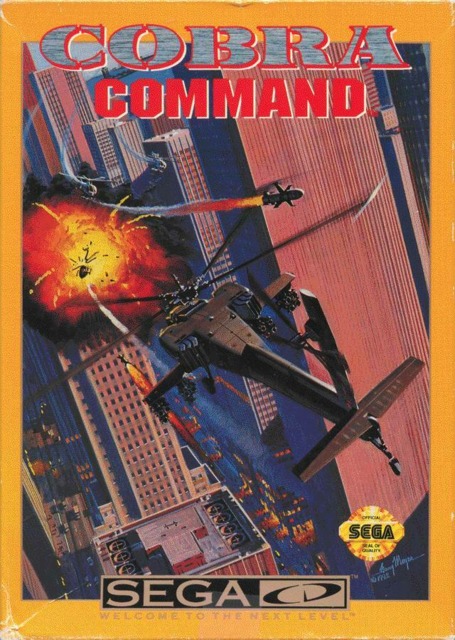
- Developer: Wolf Team
- Publisher: Wolf Team (JP) / Renovation (NA)
- JP Release: 1992-08-28 (as Thunder Storm FX)
- NA Release: November 1992 (as Cobra Command)
- EU Release: April 1993 (as Cobra Command)
- Franchise: Cobra Command
- Genre: FMV Action
- Theme: Modern Military
- Premise: Save a heavily-digitized world from terrorism from within the cockpit of your own LX-3 Super Cobra attack chopper.
- Availability: There was a recent (2009, which is not really all that recent any more) iOS port of the original LaserDisc game.
- Preservation: It was only a matter of time until the LaserDisc games found their way onto the Sega CD, given the close proximity of the two types of optical media. Gameplay for these FMV games were typically limited to watching a video and hitting buttons when prompted; Dragon's Lair is perhaps the most famous example, though many followed. Most of the biggest Sega CD games would have a similar format, and we'll be seeing a lot more from the next entry onwards once American Sega CD development kicks in. Cobra Command was Data East's attempt on the idea back in 1984, presenting an exciting attack helicopter animated FMV movie that you'd (sorta) interact with by shooting enemy vehicles with a target reticle when they were in range while occasionally holding down a cardinal direction to avoid a collision; failure to do either in time would interrupt the video with a red screen and a "lose a life" prompt. Our old friends Wolf Team (this would be their fourth Mega-CD game) took port duties here, trying their best with the FMV despite being hampered by the Sega CD's limited capabilities: that is, poor video compression and a relatively small color palette. Still, because the FMV was based on an animation rather than live-action footage it fares better than most FMV games for the system. Cobra Command would eventually be bundled with another game of Wolf Team's, Sol-Feace, for the European Sega CD launch window of April 1993 (this bundle was not available outside of Europe, sadly).
CD16: Burai: Hachigyoku no Yuushi Densetsu
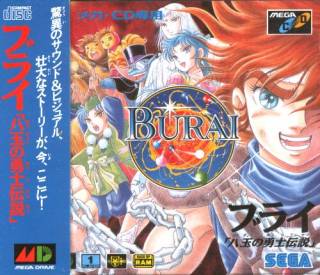
- Developer: Sega
- Publisher: Sega
- JP Release: 1992-09-11
- NA Release: N/A
- EU Release: N/A
- Franchise: Burai
- Genre: RPG
- Theme: Anime Fantasy
- Premise: Eight heroes are selected by the gods to protect the last heir of the royal Giplos family from the tyrannical usurper Bido. The player spends some time with all eight individually before they join together to take on Bido's forces and his dark god Dal.
- Availability: Many ports, but no rereleases of which I'm aware.
- Preservation: Burai's popped up in three different wiki projects so far - here, the SNES, and the PC Engine CD-ROM - and I still know next to nothing about it. Or didn't, until someone called Kurisu took it upon themselves to blog about all the Japanese-only RPGs for SFC and PCE, giving the English internet its first in-depth explanation on this obscurity. Burai is functionally built like the popular Dragon Quest IV, which begat a whole series of imitators (much like the first Dragon Quest did) that adopted its idea of a "scenario-based" RPG. That is, one that is broken up into smaller individual stories headlined by different protagonists that all unite for the second half of the game. You might recognize this set-up if you've played Octopath Traveler or that Romancing SaGa 3 Switch port in recent years - it's proven to be an enduring blueprint for RPG stories. There's a lot of history behind this game I never knew about, even if the game itself is a little rudimentary and controversial in some respects: chiefly, that the story was split into two games and some systems, like the SNES and Sega CD, only saw this first half. The continuation, Burai II: Yami Koutei no Gyakushuu, was a PC Engine CD exclusive, so any Sega or Nintendo players who wanted to know how the story ended would either have to find their way over to that platform or play the original PC version. (I'm going a little long here, but one last thing I should mention that Sega apparently reprogrammed this port themselves. It's not too different from the PCE CD version though.)
CD17: Rise of the Dragon
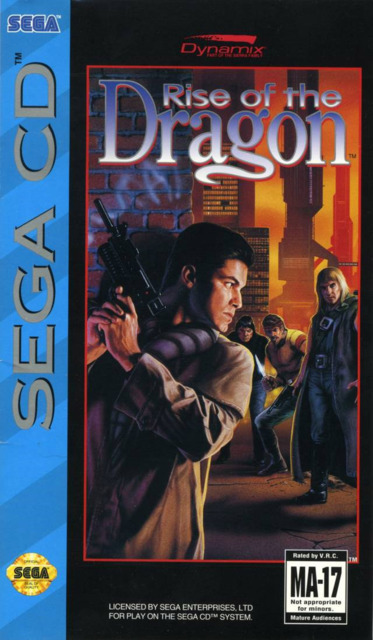
- Developer: Game Arts
- Publisher: Sega (JP) / Dynamix (NA)
- JP Release: 1992-09-25
- NA Release: March 1993
- EU Release: N/A
- Franchise: N/A
- Genre: Adventure
- Theme: Cyberpunk / Noir
- Premise: Blade Hunter, a private detective in 2053 Los Angeles, is called into action by the mayor to follow a series of grisly murders that might just involve a cultist scheme to revive an ancient dragon.
- Availability: A DRM-free version of the PC game is available on GOG. Can't get more convenient than that.
- Preservation: Wasn't expecting to see this on the list, especially since we're still a month away from the US Sega CD launch. Rise of the Dragon was created by Oregonian developers Dynamix, best known for their collaborations with Sierra making everything from flight sims (A-10 Tank Killer/Red Baron) to puzzle games (The Incredible Machine) to RPGs (Betrayal at Krondor). They also made three big point-and-click adventure PC games in the early 90s: Rise of the Dragon; The Adventures of Willy Beamish (which also saw a Sega CD port, so stay tuned); and Heart of China. However, like every other western game covered in this entry, this SCD port was handled by Japanese developers. In this case that would be Game Arts, another group like Wolf Team who have been hard at work on the Sega CD: their biggest game so far has been Lunar: The Silver Star. Rise of the Dragon cribs from a few narrative sources, but is primarily aiming for a vibe rather than any direct comparisons: it's a little bit Blade Runner, a little bit gumshoe pulp fiction, a little bit Shadowrun, and a little bit Lovecraft. It has a few uncommonly elaborate features like a monorail fast travel system and a generous time deadline to work towards with every action taking up so many hours, but is generally known (and celebrated, by some) for its deeply pulpy aesthetic and story. I've never played it, but I lived through it vicariously via an entertaining Retsupurae LP back in the day. The Sega CD port paradoxically feels both more advanced and retro: it has full voice acting, which the original lacked, but suffers from the Sega CD's pesky limited color palette which gave the game a persistent lime green tint that almost sorta works with the noir style, if you were to think of this setting as a grim futuristic corporate dystopia sponsored by Mountain Dew.
CD18: Wonder Dog
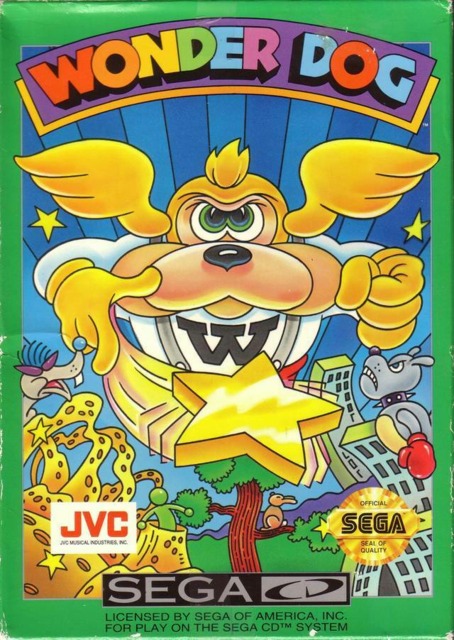
- Developer: Core Design
- Publisher: Victor Musical Industries (JP/NA) / Sega (EU)
- JP Release: 1992-09-25
- NA Release: November 1992
- EU Release: January 1994
- Franchise: N/A
- Genre: Platformer
- Theme: Literal Mascot Platformer
- Premise: Wonder Dog, a dog from space, is stashed in a spacecraft as a baby and sent to Earth to be raised in safety away from his imperiled home planet. It's not clear if his Earth name is Bark Kent, but I think you can assume.
- Availability: You can try and find the Amiga version if the Sega CD proves too elusive, but I doubt this is coming back.
- Preservation: I don't think I've seen this before, though I have seen the reverse many times vis-à-vis the NES collaborations between Atlus and LJN. Wonder Dog is a case where a UK company is given the task of creating a licensed game based on a (non-game) Japanese property: in this case, Wonder Dog, the one-time marketing mascot for Japanese recording label Victor Musical Industries (their third appearance today). The UK devs in question are Core Design, the future Tomb Raider creators, which we'll be seeing many more times on Mega Archive CD as they retrofit their Amiga/Atari ST library with various CD-ROM enhancements. For all the fuss, it's as generic as you might expect an also-run mascot platformer to be: the few novel features it has include a Kid Niki: Radical Ninja style rapid acceleration to make longer jumps but only if you have the space for a run-up (and don't bump into anything, which is very easy at high speeds) and a slow gliding descent that Wonder Dog can pull off due to his hat-wings (not unlike the Wing Cap in Super Mario Land 2, which was also released in the autumn of 1992). Actually, the most notable thing about Wonder Dog is the very Homer Simpson "D'oh" (sorry, "annoyed grunt") he makes when he gets hit.
CD19: Black Hole Assault

- Developer: Micronet
- Publisher: Micronet (JP) / Bignet USA (NA) / Sega (EU)
- JP Release: 1992-10-23
- NA Release: November 1992
- EU Release: 1993
- Franchise: Heavy Nova
- Genre: Fighter
- Theme: Rock 'em Sock 'em Robots
- Premise: The Akirovians are back, being dicks to humanity for no discernable reason by sabotaging efforts to grow extraterrestrial food, which we need to figure out because we ravaged Earth's ecosystem. It's time to send those jerks packing with another series of giant robot fights. We're good at robots. Not so good at moving off fossil fuels though, I guess.
- Availability: Nothing doing. Micronet abandoned game development entirely and got real jobs.
- Preservation: Well, it didn't take long, but the Sega CD has its first sequel to another Sega CD game. Black Hole Assault (or Blackhole Assault, as our wiki has it) is Micronet's follow-up to their mech suit action game Heavy Nova (MA XV), which was one of the two Mega-CD launch games along with Sol-Feace. Like its predecessor, Black Hole Assault is about two cumbersome mechs very slowly taking each other down, though in this case they've streamlined a lot of dull loadout selection and platforming sections. One might argue that the pre-fight prep was the only thing setting Heavy Nova apart from the many unremarkable 16-bit fighters popping up in Street Fighter II's wake, but I still think the game's pacing is better off without it. It's still a tedious game though, and having a bunch of fancy anime cutscenes doesn't make it any more exciting to play.
CD20: Pro Yakyuu Super League CD

- Developer: Sega
- Publisher: Sega
- JP Release: 1992-10-30
- NA Release: N/A
- EU Release: N/A
- Franchise: Super League
- Genre: Baseball
- Theme: Baseball
- Premise: Baseball
- Availability: Sega didn't even release this one in English, despite the Sega CD lacking for sports titles. If they didn't care enough then, it's not looking good 28 years later.
- Preservation: Welcome back to Super League, Sega's own store-brand baseball series to compete with the likes of Namco's Famista. We covered Super League '91, the previous game in the series, via its American title Sports Talk Baseball (MA XII) a ways back and the first Super League (as Tommy Lasorda Baseball) in the very first edition (MA I). There's little new with Super League CD, despite moving up to the CD format. There's no FMV, the intro is barely animated but for a few seconds of rotoscoped imagery, and the only major difference between this and SL91 is that there's some jaunty redbook audio BGM playing throughout the game. Still, it seems like a competent enough baseball game with all the NPB licensed teams and players a fan of Japanese baseball could want, even if it's not much to look at. We'll see one more Super League CD game in 1993, by which time Sega will have found themselves a celebrity endorsement. That's about as exciting as baseball games ever tend to get.
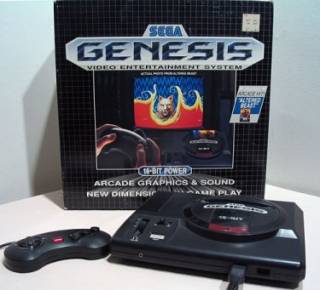
Log in to comment